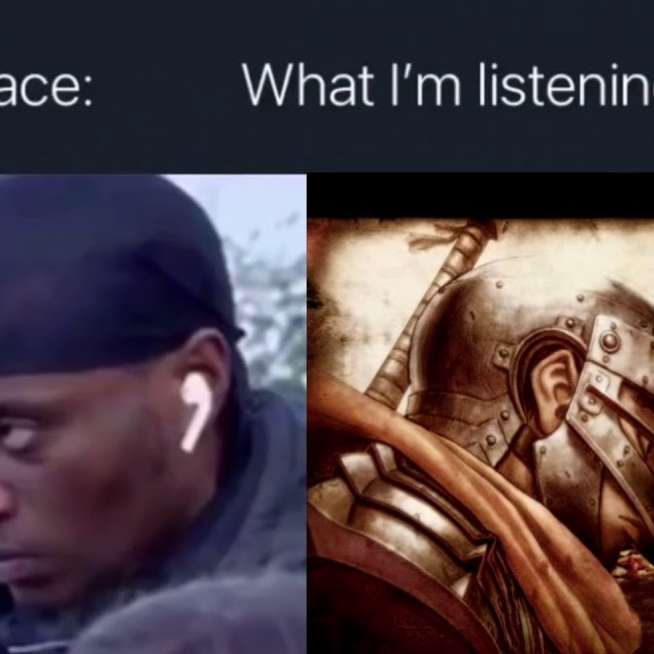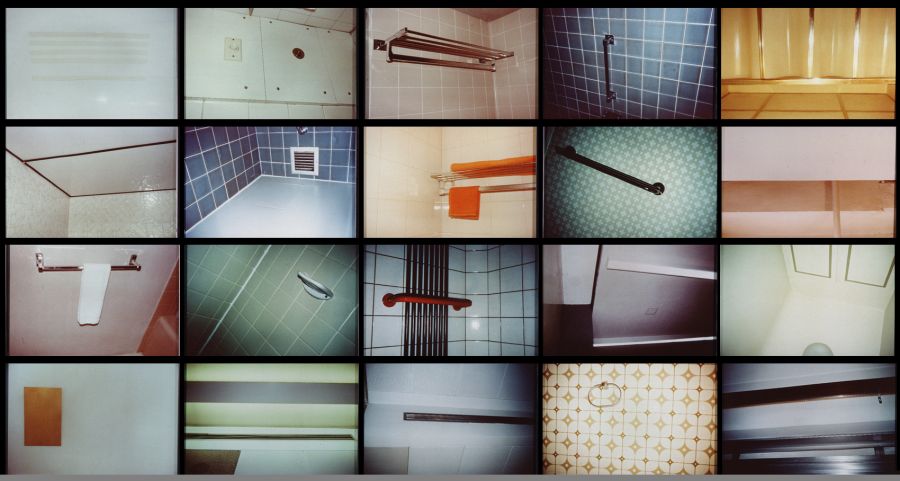
Sleepless Nights is groupings of images of cosmic glows and featureless voids found in fairly boring places. The images are of light bulbs, lighting fixtures, blank walls, vast ceilings and empty hallways.

"The Sacred and the Mundane"
By Beatrice Colin, Stills Edinburgh
‘I always took lots of photos on tour,’ says David Byrne. ‘Hotel rooms—that’s where I end up.’ Down the line from New York, he pauses. ‘I had no idea why I was taking them.’ In his exhibition, entitled Sacred Objects, Sleepless Nights there are a number of pictures of hotel rooms. Details of pristine bathrooms, hallways, various light fittings and towel rails are individually framed and hung in groups. They’re both mundane and profound, celebrating the instantly forgettable. ‘You go into a hotel room and you end up staring at these things,’ he explains. ‘They have a kind of aura, a kind of dumbness and stupidity at the same time. It’s like you’re trying to achieve something really stupid. That’s what it feels like.’
But although Byrne adopts the small-boy-in-a-big-town persona, he’s no space cadet. While frontman of Talking Heads he bunked off mandatory on-tour drink and drug sessions to visit art galleries and museums, he has also directed numerous videos, has won awards for his film scores, is regularly asked to write catalogue notes for photography exhibitions and has even gazed, wide-eyed, from the cover of Time magazine.
Photography, rather than the ‘mindless activity’, he claims his work began as, was something he studied at Rhode Island Art College. Here, he began experimenting with photographs when he found a pile of negatives in a neighbor’s attic, and now he has re-printed old negatives to hang beside new work and has put together enough material for Stills to compile his first retrospective. ‘It’s like writing songs,’ he points our. ‘You collect a lot of ideas and they pile up somewhere and then at some point you come back to them and you realize that there’s something there and you can make something out of it.’
The show ranges from early efforts to record his immediate surroundings to sophisticated photographic studies executed in studios and framed in gilt, but although the presentation changes, the subjects remain the same. Byrne is drawn to objects like a tooth, a book, an armchair and a bowl full of feathers which are consequently invested with character and drama. ‘Broken knife (1993)’ captures the piece of cutlery on red velvet like some sort of tragic hero. The knife looks both shiny and forlorn. ‘Easy Chair (1979)’ a brown checked dragoon armchair is staged in four different positions as if in the middle of some crazy dance. ‘If the armchair was human, it would be drunk and putting on a performance,’ he laughs. ‘Do I invest inanimate objects with some of my personality? Probably, that could be.’
But is the work any good or is it just the photographic doodles of a very famous person? In common with the scribbles of John Lennon, the paintings of Joni Mitchell and Keith Richards, the persona behind the camera tends to overshadow any real critical judgment. His double-exposure of two almost identical bungalows called ‘Warnings between Osaka and Kyoto (1989)’ is just a cute observation.
‘I really liked the way those houses looked,’ he says. ‘I’d taken lots and lots of photographs of them and a lot of the bungalows are almost identical but not quite. And I wondered what would happen if I sandwiched the transparencies together. Only the differences stick out, like whether there’s a carport in one or one has overhanging eaves.
[…] recent work is often lit like glossy advertisements but he claims that’s only part of the picture. ‘I care a little bit about technicalities but I’m not that fastidious about it,’ he says. ‘I’m not the type of art photographer that loves the beauty of the print and holds the print as beautiful object. I think most of this reflects the fact that I’ve chosen to photographs particular things, and not that it’s an absolutely amazing photograph about this particular thing.’
How much do his ideas overlap? ‘I think in specific mediums, not that they couldn’t go another way,’ he says. ‘I don’t have preconceived ideas from the start about how things are going to end up. But somewhere along the line I arrive at a point where it’s very clear how it should end up.’
This is an eccentric show, one which is stamped and sealed with a particular personality. However it’s interesting to look at the work in a wider context in which Byrne documents the man-made and searches in the corners of his habitat for enlightenment. Is his work a reflection of contemporary America? ‘I suppose so. They show a kind of a spiritual striving, a confusion, or an aimlessness. Or something.’
Byrne pauses and the silence echoes a million sleepless nights spent staring at the outline of the light switch.